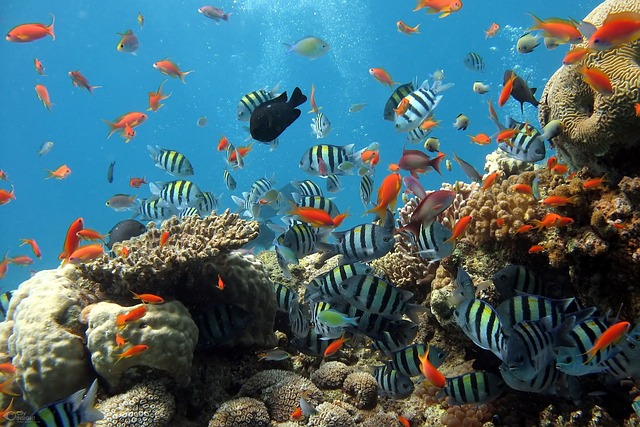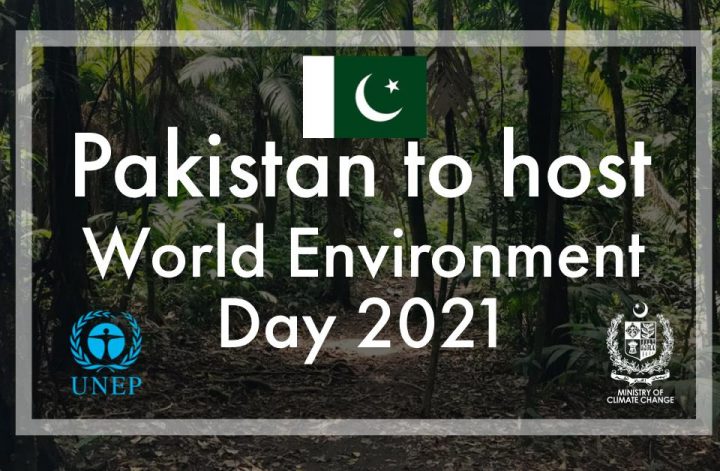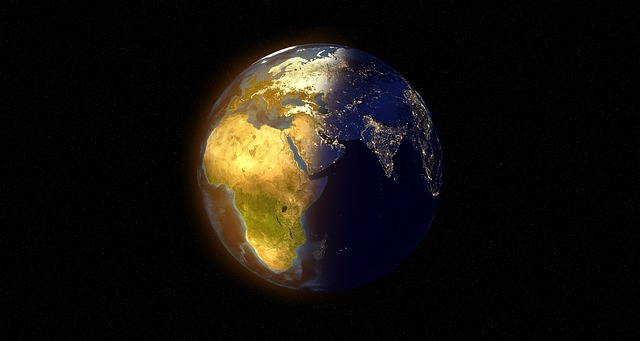Introduction: What are Coral Reefs? Why are they Important?
Coral reefs are primarily an underwater ecosystem that are home to a vast variety of aquatic flora and fauna. They are made by an invertebrate animal called the coral polyp that can either form large colonies composed of many coral skeletons or be singular. Thousands of species of corals have been discovered; some live in warm, shallow, tropical seas and others in the cold, dark depths of the ocean. There are also many types of coral reefs.
Coral reefs are particularly important as they are a biodiversity hotspot of about 25% of the marine flora and fauna. Without Coral reefs all of these organisms relying on these structures for food and shelter are in danger of dying off. This is even more of a concern as due to global rise in temperature and ocean acidification has lead to mass bleaching events of coral reefs that has made them endangered.
For more information, check out: Coral Reef Destruction- Causes, Effects and Solutions
How Can We Protect Coral Reefs?
Some efforts that can be made for this cause include:
- Protecting their habitat by discouraging use of single plastics, fishing rods, dynamite fishing as all of these contribute to the breakage of coral reef structures home to many fish.
- Plant coral structures. Corals have the ability to regenerate, so planting broken fragments of coral can actually help their population. For more Information Check Out, What is Coral Gardening?- How it can Help Save Coral Reefs
- Use eco-friendly sunscreens that do not contains chemicals. Oxybenzone and some other chemicals in particular even in low concentrations can induce bleaching in coral, effect the photosynthesis of the symbiotic algae that provides the coral with nutrients in return for shelter and also damages their DNA altering reproduction.
Latest Coral Reef Conservation Projects:
Some of the latest coral reef restoration efforts from around the globe have been compiled below with brief details:
- Cousin Island, Seychelles: This project has been immensely successful using the coral gardening technique and has planted over 40,000 corals since 2010 and even transplanted half of these corals back onto underwater reefs. They used fragments of healthy coral and grew them in protected nurseries until they were mature enough to sustain themselves. These were then planted onto the degraded reefs and have since been flourishing.
- SECORE Coral, Yucatan Peninsula, Mexico: The technique used by SECORE international is that of sexual reproduction in coral reefs. This is a very unique and innovative approach as typically coral is grown using asexual methods which results in corals being the exact clones of their parents. However, sexually reproducing corals not only introduce genetic diversity among coral species but also makes them more resilient and adaptable to climatic changes. The only drawback of this technique is that it needs to be done in a certain time frame when the natural spawning of the coral reef occurs. Spawning is a unique event that happens only 3 days in a year normally in the summer. During those days different coral species release eggs and sperms are released in packets where the eggs float to the surface and break up to spread far away to different colonies. They fertilize and produce a coral polyp. Now, during this event, SECORE uses a trap made of very soft fabric, weighed down by plates from its edges. It is placed on a colony. When the eggs are released they are captured by the plastic bottles that are also attached and these are taken by the divers back to the boat where they simply mix these gametes from different unrelated colonies and promote fertilization by moving the mixture around. The mixture is then brought back to lab where they are allowed to grow and develop into larvae. They are then placed onto a substrate specially designed by SECORE and applied onto settlement bases/molds which are then placed back onto reefs that are degrading or already degraded. In the right conditions, they start to grow. The entire process is very sustainable and natural as even the glue used on the settlement molds are made of algae which not only provide a source of nutrients but also helps bind and protect them from water movements to prevent dislodging. For more information check out their website, SECORE.int.
- Pur Coral, Bali, Indonesia: This is a project to preserve and regenerate marine ecosystems in Pejarakan, Bali. The corals have been destroyed mostly by cyanide and dynamite fishing, which are now banned there. Since its start in 2016, the project has placed artificially made reef structures underwater, then planted 1855 corals, from more than 15 species on them. They have placed concrete structures to allow the coral to grow on to prevent mining and bombing of the corals for fishes.
- RangerBot, Great Barrier Reef: Researchers at Queensland University of Technology in Australia have developed a state of the art robot that will help preserve the largest coral reef structures in the Great Barrier Reef- The RangerBot. It’s first function is to search and destroy any harmful predator; particularly the very invasive Crown-of-Thorns Starfish and injects them with a lethal dose of poison. It also monitors the health of the coral and water quality, while also being able to map vast areas underwater at scales not previously possible.
- World’s largest 3D printed reef, Summer Island, Maldives: This project uses 3D printing to print a rigid skeleton on which corals can be implanted and grown. In August 2018, the first reef off the coast of Summer Island was placed underwater, in an area where there has never been a coral reef, and where locals have been growing corals. This has made it very easy to grow corals and preserve them.
Out of the many restoration projects ongoing in the world, these are the major 5, therefore, in order to protect the reefs we need to not only combat climate change but also actively work to enhance their survival rate by restoring them and enhancing their resilience for future potential dangers and climate change.
We hope you all liked this post! Please comment below if you have any suggestions, comments, or feedback! We at #envpk love hearing from our readers! Thanks!




